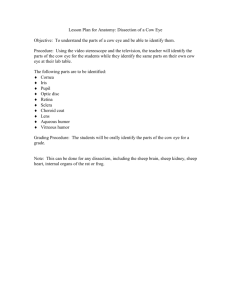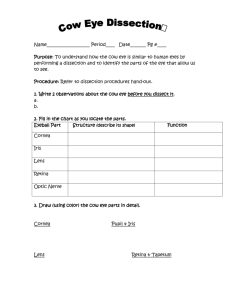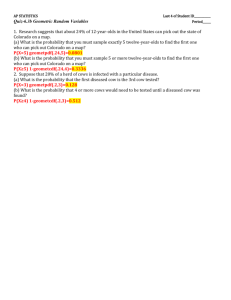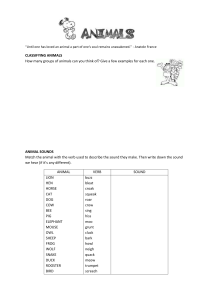Cattle Producer’s Handbook Beef Cow Share Lease Arrangements Finance Section 960
advertisement
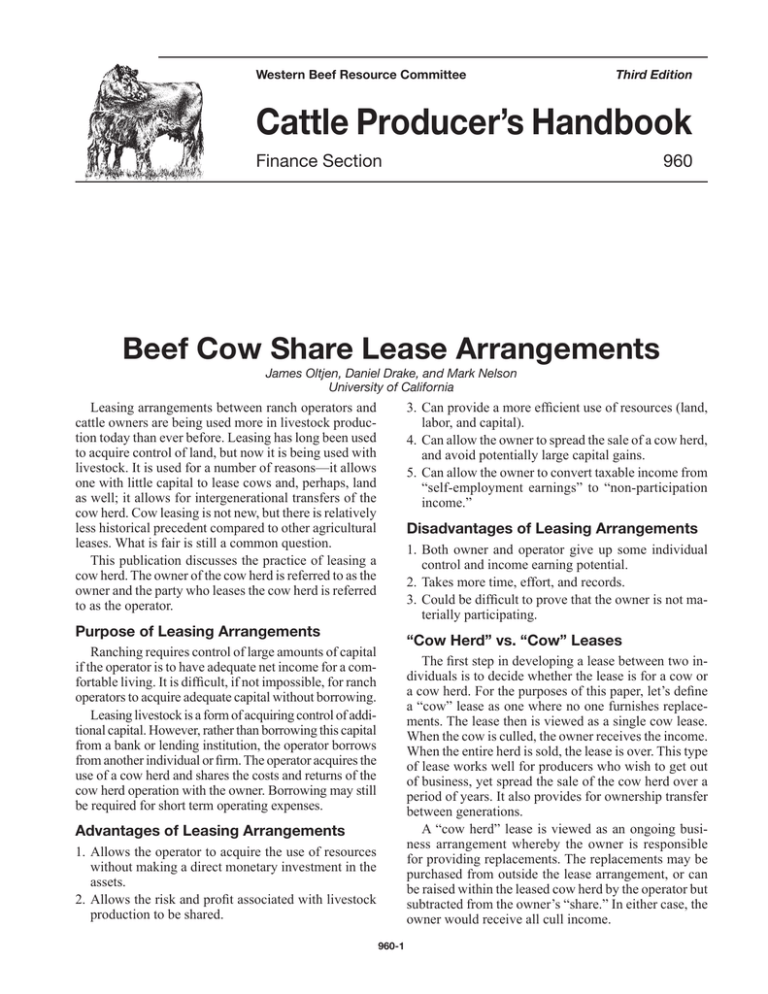
Western Beef Resource Committee Third Edition Cattle Producer’s Handbook Finance Section 960 Beef Cow Share Lease Arrangements James Oltjen, Daniel Drake, and Mark Nelson University of California Leasing arrangements between ranch operators and cattle owners are being used more in livestock production today than ever before. Leasing has long been used to acquire control of land, but now it is being used with livestock. It is used for a number of reasons—it allows one with little capital to lease cows and, perhaps, land as well; it allows for intergenerational transfers of the cow herd. Cow leasing is not new, but there is relatively less historical precedent compared to other agricultural leases. What is fair is still a common question. This publication discusses the practice of leasing a cow herd. The owner of the cow herd is referred to as the owner and the party who leases the cow herd is referred to as the operator. 3.Can provide a more efficient use of resources (land, labor, and capital). 4. Can allow the owner to spread the sale of a cow herd, and avoid potentially large capital gains. 5. Can allow the owner to convert taxable income from “self-employment earnings” to “non-participation income.” Disadvantages of Leasing Arrangements 1.Both owner and operator give up some individual control and income earning potential. 2.Takes more time, effort, and records. 3.Could be difficult to prove that the owner is not materially participating. Purpose of Leasing Arrangements “Cow Herd” vs. “Cow” Leases Ranching requires control of large amounts of capital if the operator is to have adequate net income for a comfortable living. It is difficult, if not impossible, for ranch operators to acquire adequate capital without borrowing. Leasing livestock is a form of acquiring control of additional capital. However, rather than borrowing this capital from a bank or lending institution, the operator borrows from another individual or firm. The operator acquires the use of a cow herd and shares the costs and returns of the cow herd operation with the owner. Borrowing may still be required for short term operating expenses. The first step in developing a lease between two individuals is to decide whether the lease is for a cow or a cow herd. For the purposes of this paper, let’s define a “cow” lease as one where no one furnishes replacements. The lease then is viewed as a single cow lease. When the cow is culled, the owner receives the income. When the entire herd is sold, the lease is over. This type of lease works well for producers who wish to get out of business, yet spread the sale of the cow herd over a period of years. It also provides for ownership transfer between generations. A “cow herd” lease is viewed as an ongoing business arrangement whereby the owner is responsible for providing replacements. The replacements may be purchased from outside the lease arrangement, or can be raised within the leased cow herd by the operator but subtracted from the owner’s “share.” In either case, the owner would receive all cull income. Advantages of Leasing Arrangements 1.Allows the operator to acquire the use of resources without making a direct monetary investment in the assets. 2.Allows the risk and profit associated with livestock production to be shared. 960-1

